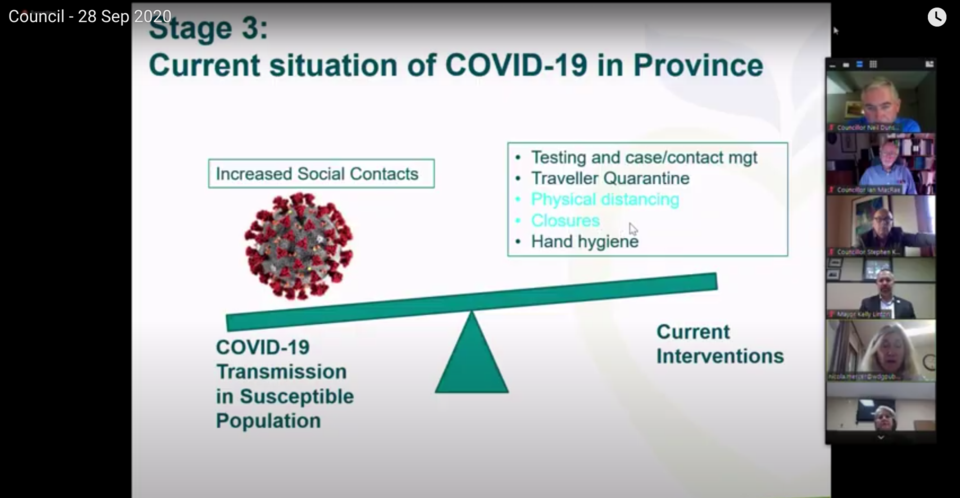CENTRE WELLINGTON – The head of Wellington-Dufferin-Guelph Public Health stressed that we could be seeing a second-wave and it won’t take much for it to be worse than the first wave.
Dr. Nicola Mercer, Medical Officer of Health and CEO of WDG Public Health, gave a presentation to Centre Wellington council on Monday where she shared her concerns about a possible second-wave.
Mercer showed a graph tracking the number of cases per day in the province up to Sept. 25 but said there were substantial increases over the weekend.
The graph showed a peak in spring, a dip in summer and then steadily climbing up in recent weeks.
“It demonstrates that we are potentially entering a second wave,” Mercer said, adding that waves are seen more in hindsight rather than as it happens.
She explained during the spring peak, they were never hitting more than about 700 cases per day.
However, during this time there was much less testing in Ontario and she said the peak might have been underestimated.
In a comparison across Ontario’s 34 public health units, Mercer noted that WDG Public Health ranks among the top for COVID cases based on population rate.
“There are very few health units actually that have higher rates of COVID than Wellington-Dufferin-Guelph,” Mercer said. “We have consistently ranked in the top 25 per cent of health units for number of cases.”
According to Mercer’s presentation, for the week of Sept. 14 to Sept. 20, these public health units are: Toronto, Peel, Halton, York Region, Ottawa and Waterloo.
So what’s causing this new increase?
For starters, Mercer said a majority of new cases are shifting away from seniors to younger adults who generally have more contacts outside their household.
“This is spread person to person, it is not as much about things as it is about people,” Mercer said and noted people have an easier time dealing with increased cleaning of surfaces like doorknobs. “This is not about doorknobs in our lives, it’s about the people in our lives.”
During earlier stages of lockdown, transmission was reduced because of limited social contact from closures, physical distancing, hand hygiene, mandatory masks and others.
In the presentation this was represented by a scale, showing transmission balanced through pandemic measures.
Mercer said the scale is again tipping in favour of transmission because of increased social contacts and pandemic fatigue causing people to not be as careful.
“We’re not in a balance anymore,” Mercer said. “We’re seeing the weight of our social contacts is actually outstripping all of the things that we are doing to try to control this virus. It’s beginning to show up with increasing numbers of cases.”
Mercer stressed that she does not want to eliminate all social contact or have businesses and schools closed again.
The virus can be controlled but it doesn’t take much for cases to double or more than double.
“With Thanksgiving coming up, if people go and have their family get togethers that they’ve had in previous years, two weeks after Thanksgiving we are going to see a dramatic increase in cases,” Mercer said. “That is bad for business and it is bad for our schools.”
Masks have been a staple of the WDG Public Health strategy. The region was one of the first in Canada to issue a mandatory mask order and it will not be rescinded anytime soon.
To remove the mask order, Mercer said that broad community immunity and low transmission rates would be necessary and that won’t happen by allowing the virus to run its course based on any mathematical modeling.
This will largely depend on an effective vaccination to which Mercer said is not likely to come for at least 12 months.
She said normally vaccination rates to burn out a virus would be high but for COVID just having 40 per cent of people immunized will eventually eliminate transmission. She suggested, without promising, that this could lead to an end to mandatory masks.
“I look forward to one day removing the mask order,” Mercer said.



